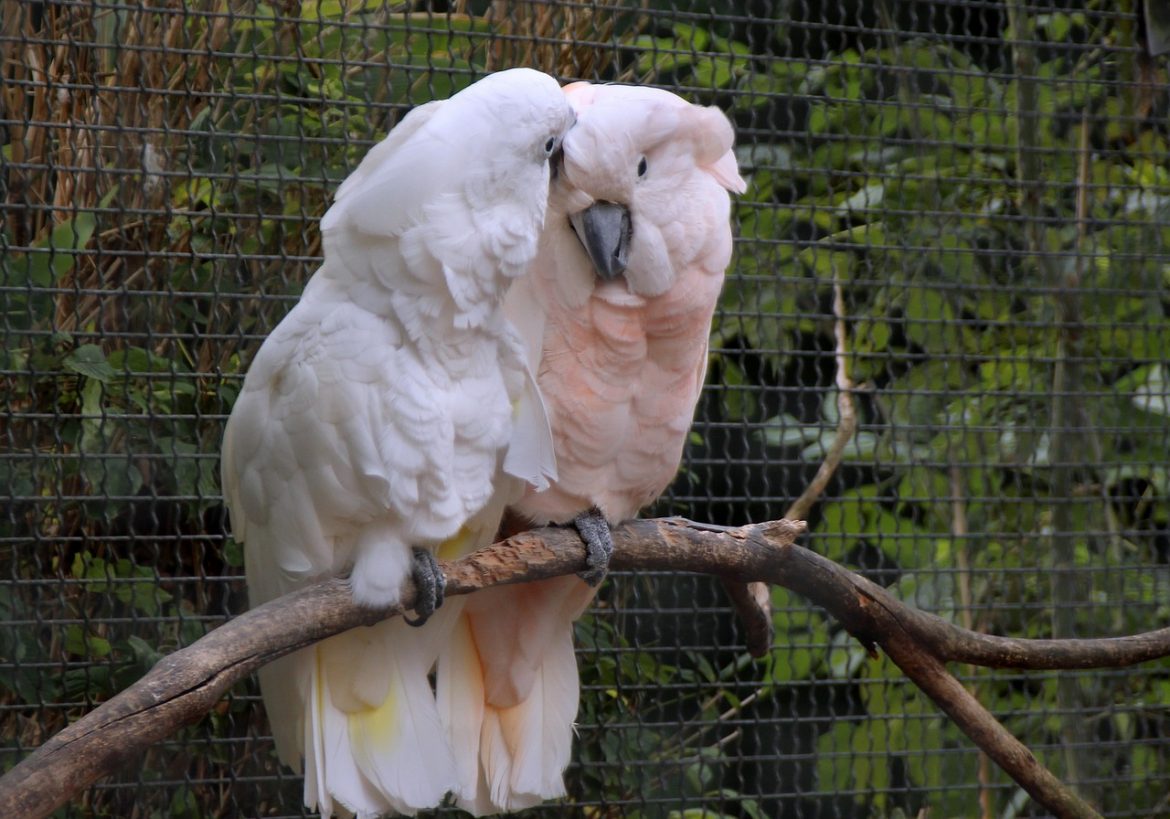My journey in Indonesia: Moluccas or the last cockatoos hiding in Seram Island’s Manusela Park and the incredible work of the Indonesian Parrot Project
This winter 2017-2018, my consulting activities led me to beautiful and richly biodiverse Indonesia, where I assisted the government through the Global Green Growth Institue to elaborate green policy guidance in support to the country industrial development (http://greengrowth.bappenas.go.id/en/home).
This 5 months mission offered me a unique opportunity to meet with partner organizations and communities in the region who are all in their own patient way contributing to biodiversity preservation (indigenous people included). Therefore in the coming weeks I will write a few introductory articles to share with you about the incredible work of those individuals and communities and above all the natural beauty of our world, and hopefully stimulate your curiosity enough to Google and learn more.
This fantastic journey to Moluccas started long before my actual trip to those remote islands, actually several decades before. As long as I can remember, all my life has been accompanied with birds both domestic and wild. But when I raised my first cockatiel from the egg, hand-fed her, carried her on my shoulder when preparing my physics exams and shared 17 years of my life with this joyful companion (born ethically as well from parents bread in captivity), I often dreamt about how her ancestors in the wild were living and how magic a vision it would be to see their flock or the lovely couples (they bond for life) roam free. My cockatiel was from Australia and althougha rather a small ambassador of her specie, she made me fantasize about her bigger brothers the cockatoos from Australia and above all from the virgin rainforests of Indonesia. Till today I wish I had a house and a garden to have an aviary.
So when I headed up to Moluccas, it was naturally that whatever the amount of hardship from the muddy trails, leeches, cold damp nights and tropical rains I would endure (I didn’t go at the best season!), I would go to immerse myself in the forest and feel the atmosphere, sounds and smells in which they evolve. And deep down, it was with the awe and feeling of priviledge that I entered in Manusela Park, knowing that sadly many of those beloved and endemic species of cockatoos and parrots are on the brink of extinction. Visiting the Indonesian Parrot Project http://indonesian-parrot-project.org/ was a must.
The movie below and their website can explain better their battle to motivate the communities to shift from bird poaching to preservation notably through the development of eco-tourism, their efforts to collect wounded birds when poachers are intercepted by the police and rehabilitate them in the wild, their advocacy for their preservation and through the birds, the full ecosystem of the forest. As an example
Only 22 of these rare Abbotti Cockatoos exist in the wild.
The reality of the bird trafficking is heartbreaking. In 2015, smugglers were caught in Indonesia having hidden cockatoos and Eclectus parrots in plastic bottles. The images speak for themselves. In any smuggling operation, about 75% birds die.
http://www.dailymail.co.uk/news/article-3067691/Smugglers-birds-plastic-bottles-customs.html
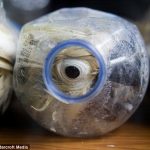
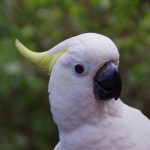
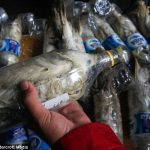
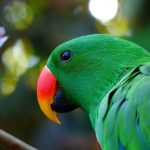
The traffic is fuelled by the national and regional demand in birds. Sadly, those birds are prized as a symbol of status, to amuse the tourists or taken as pet by local villagers unable to provide dignified living conditions. International demand highly contributes as well while in most western countries, it is possible to acquire a bird ethically provided one doesn’t buy in shops but rather to a serious aviary from parents also born in captivity. While there could be long debate on whether or not parrots should become human companions, the complexity of today’s world makes that at the same time preservation actions such as the Parrot Rehabilitation Project should be prioritized and supported, and while bird purchase often fuelled the traffic, it is also true that the preservation of parrots in captivity (in dignified conditions) can also contribute to protect the specie and keep a wider genetical pool (see http://www.sciencemag.org/news/2017/01/can-escaped-pets-rescue-endangered-species). For the ones who do not know the intelligence, kindness, love capacity, joyfulness but also the extreme demands posed by a cockatoo and its amazing creativity in designing ways to destroy things, the best site to consult is http://www.mytoos.com/main.shtml It has been compared taking care of a cockatoo as similar as a special needs child, with all respect that the cockatoo is in full intelligence capacity albeit different than ours.

Coming back to the Parrot Rehabilitation Project and the patient work done by its founder, by Bonnie Zimmerman and her local team, the results are visible: a beautiful center on land put at disposal by the community with spacious cage where parrots can recover strenght from hardships and trauma before returning to the wild. And a viable livelihood solution for the poachers. When a poacher would catch earn a mere 2,5USD per bird , a reconversion in eco-tourism generate 25USD per day guiding forest treks. However not all the villages on the island have converted and the eco-activity needs development as well as other income generating stratégies such as cocoa production. See also http://cityparrots.org/journal/2008/12/26/forest-conversion-poaching-at-manusela-kill-rare-seram-cocka.htm
If you feel like making a donation, here is the link http://indonesian-parrot-project.org/get-involved/donate/
 I can only recommend to go off the beaten track and treck this beautiful park with the guiding from the project staff who have now created a website and whose contacts are here https://drive.google.com/file/d/1tYksS3gPE4pJqsZq33CnwxXYyqWZ0-h7/view or directly Bonnie from her Facebook page https://www.facebook.com/bonnie.zimmermann
I can only recommend to go off the beaten track and treck this beautiful park with the guiding from the project staff who have now created a website and whose contacts are here https://drive.google.com/file/d/1tYksS3gPE4pJqsZq33CnwxXYyqWZ0-h7/view or directly Bonnie from her Facebook page https://www.facebook.com/bonnie.zimmermann
This article although not using the community guides can give an idea on how to reach there http://burung-nusantara.org/birding-sites/maluku/seram/
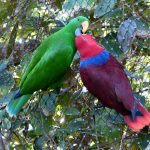 But the best is to follow my advice on tripadvisor https://fr.tripadvisor.ch/Attraction_Review-g1600180-d7264095-Reviews-Manusela_National_Park-Seram_Island_Maluku_Islands.html
But the best is to follow my advice on tripadvisor https://fr.tripadvisor.ch/Attraction_Review-g1600180-d7264095-Reviews-Manusela_National_Park-Seram_Island_Maluku_Islands.html
“Fantastic jungle to see endangered parrot species and trekThis is one of the last home for Molluccas Cockatoo and other endangered parrots. You can see and hear them while trekking on the beautiful dense rainforest crossing rivers or climbing mountains. I recommend to contact a community project in Masuhilan linked to the seram parrot rehabilitation project. Sony the guide is the kindest person, as is the community that will host and accompany you. Sony speaks broken english and will pick you up right from your ferry and negotiate the best transport fares for you. I wouldn’t think going on your own in Seram if you don’t speak Bahasa. And even if you do, guide like Sony can really introduce you to its biodiversity. Besides by helping reconvert ex illegal traders into ecotourist guide, this is a great contribution you can make to the preservation of this unique natural capital. Avoid Seram for diving as the use of dynamite and overfishing means most corals are destroyed and besides sharks, few fishes remained. But Seram is worth visiting for the sheer opportunity to trek into Manusela park. I had a fantastic time with them and got a glimpse into village life.”
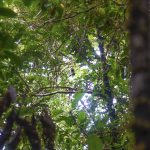



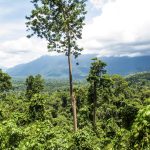
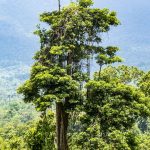 From left to right: Hornbill hiding between branches, rangers caban, Sony (Guide), at the bird observatory with the team, canopy and tall Parrot nest bearing trees .
From left to right: Hornbill hiding between branches, rangers caban, Sony (Guide), at the bird observatory with the team, canopy and tall Parrot nest bearing trees .

